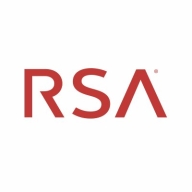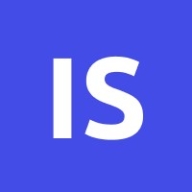

RSA SecurID and UserLock are two security solutions catering to different needs. RSA SecurID's extensive features and robust security make it highly valued, but UserLock's simplicity and efficiency are more effective for everyday use according to user reviews.
What features are offered by RSA SecurID in comparison to UserLock?RSA SecurID offers comprehensive security features such as multi-factor authentication, strong encryption methods, and extensive security policies. UserLock is praised for its ease of integration, efficient access control, and user-friendly interface.
What areas of improvement can be found in RSA SecurID in comparison to UserLock?RSA SecurID could improve by reducing complexity, enhancing user experience, and streamlining the setup process. UserLock could benefit from expanding its feature set to address more advanced security needs, improving customer service responsiveness, and adding more robust security controls.
How is the ease of deployment and customer service of RSA SecurID in comparison to UserLock?RSA SecurID's deployment process is often seen as complex and time-consuming, requiring significant setup, though its customer service receives high praise for support quality. UserLock is noted for its straightforward deployment and ease of use, though its customer service is seen as less proactive.
What setup costs and ROI can be seen with RSA SecurID in comparison to UserLock?RSA SecurID's setup cost is higher, but its comprehensive security features justify the investment. UserLock is considered economical, offering good value for its price, with users appreciating the rapid return on investment due to its cost-effectiveness and efficiency.
| Product | Market Share (%) |
|---|---|
| RSA SecurID | 5.9% |
| UserLock | 1.1% |
| Other | 93.0% |

| Company Size | Count |
|---|---|
| Small Business | 5 |
| Large Enterprise | 4 |
The RSA SecurID Suite combines the separate disciplines of access management and authentication with identity governance and user lifecycle management into one comprehensive suite. It goes way beyond the capabilities of traditional identity and access management systems by using risk analytics to provide identity and access assurance. This helps organizations solve two fundamental challenges:
UserLock provides advanced Identity & Access Management (IAM) using Microsoft Active Directory, protecting hybrid and remote environments.
UserLock enhances security with multi-factor authentication, single sign-on, and context-aware access controls, tailored for Active Directory environments without requiring complex identity migrations. It offers real-time visibility for IT teams to monitor and control user sessions, effectively preventing account sharing and unauthorized access. With detailed auditing, UserLock supports compliance with standards like ISO 27001, HIPAA, and NIS2.
What features make UserLock valuable?UserLock is implemented in various industries to address specific demands for secure and seamless access management. In finance, it safeguards sensitive data through rigorous login authentication. Healthcare organizations use UserLock to maintain strict compliance with patient information security standards, while educational institutions benefit from its ability to manage and track access in complex network environments. With its flexible integration, UserLock supports industry-specific security protocols and operational needs.
We monitor all Authentication Systems reviews to prevent fraudulent reviews and keep review quality high. We do not post reviews by company employees or direct competitors. We validate each review for authenticity via cross-reference with LinkedIn, and personal follow-up with the reviewer when necessary.